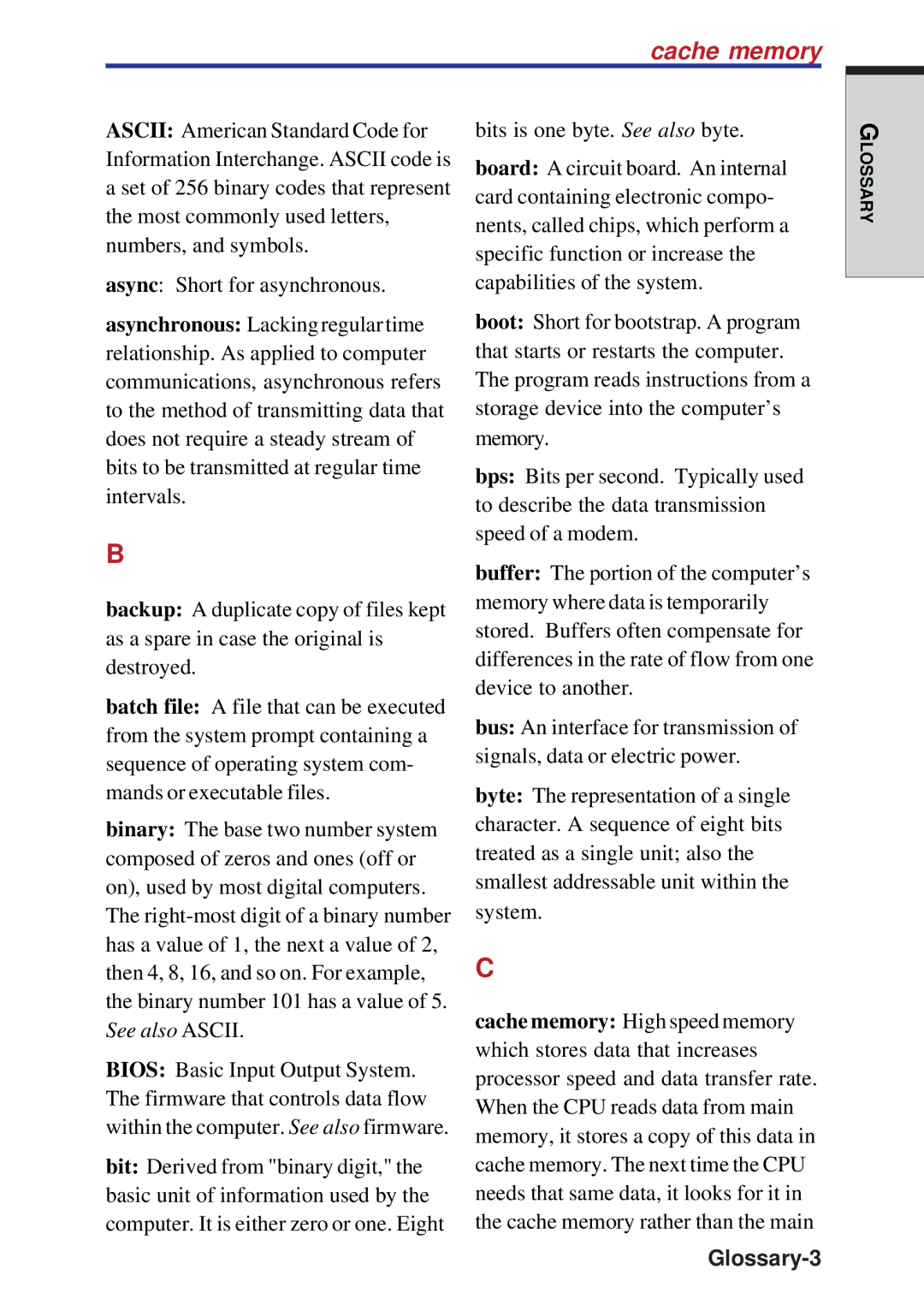
cache memory
ASCII: American Standard Code for Information Interchange. ASCII code is a set of 256 binary codes that represent the most commonly used letters, numbers, and symbols.
async: Short for asynchronous.
asynchronous: Lacking regular time relationship. As applied to computer communications, asynchronous refers to the method of transmitting data that does not require a steady stream of bits to be transmitted at regular time intervals.
B
backup: A duplicate copy of files kept as a spare in case the original is destroyed.
batch file: A file that can be executed from the system prompt containing a sequence of operating system com- mands or executable files.
binary: The base two number system composed of zeros and ones (off or on), used by most digital computers. The
BIOS: Basic Input Output System. The firmware that controls data flow within the computer. See also firmware.
bit: Derived from "binary digit," the basic unit of information used by the computer. It is either zero or one. Eight
bits is one byte. See also byte.
board: A circuit board. An internal card containing electronic compo- nents, called chips, which perform a specific function or increase the capabilities of the system.
boot: Short for bootstrap. A program that starts or restarts the computer. The program reads instructions from a storage device into the computer’s memory.
bps: Bits per second. Typically used to describe the data transmission speed of a modem.
buffer: The portion of the computer’s memory where data is temporarily stored. Buffers often compensate for differences in the rate of flow from one device to another.
bus: An interface for transmission of signals, data or electric power.
byte: The representation of a single character. A sequence of eight bits treated as a single unit; also the smallest addressable unit within the system.
C
cache memory: High speed memory which stores data that increases processor speed and data transfer rate. When the CPU reads data from main memory, it stores a copy of this data in cache memory. The next time the CPU needs that same data, it looks for it in the cache memory rather than the main
Glossary-3
LOSSARYG
